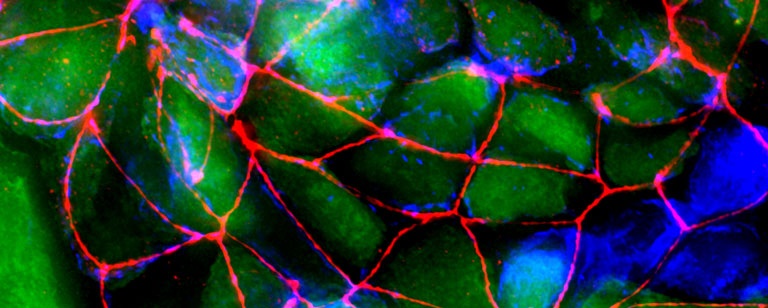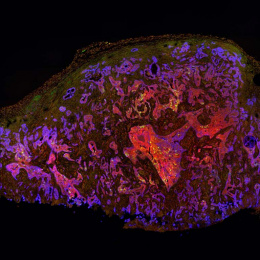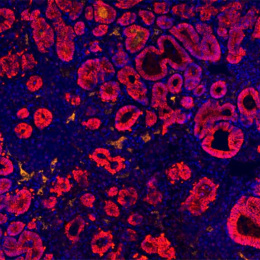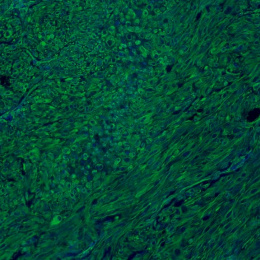Junctions Between Human Breast Cancer Cells
Junctions Between Human Breast Cancer Cells
Submitted by Michele Balsamo of the Gertler Lab at the Koch Institute
MIT Department of Biology, Koch Institute at MIT
Michele Balsamo
Gertler Lab, Koch Institute
Deconvolution Micrograph
"This image depicts a monolayer of human breast cancer cells, stained for a cell-cell junction marker (ZO-1, in red), which is important to seal the apical part of the epithelium.
Often in human epithelial cancers such as breast, prostate, lung, colon, pancreatic, skin (non melanoma skin tumors) there is a massive disruption of the normal tissue architecture, and deregulated cell-cell adhesion can contribute to metastasis. This has been shown in models of the epithelial to mesenchymal transition (EMT), which is a biological process that naturally occurs during embryo development for the formation and shape of different organs, but in epithelial cancers is thought to contribute to metastasis. I was trying to learn the contribution of actin cytoskeleton regulatory proteins during the formation of cell-cell junctions in epithelial cells."






